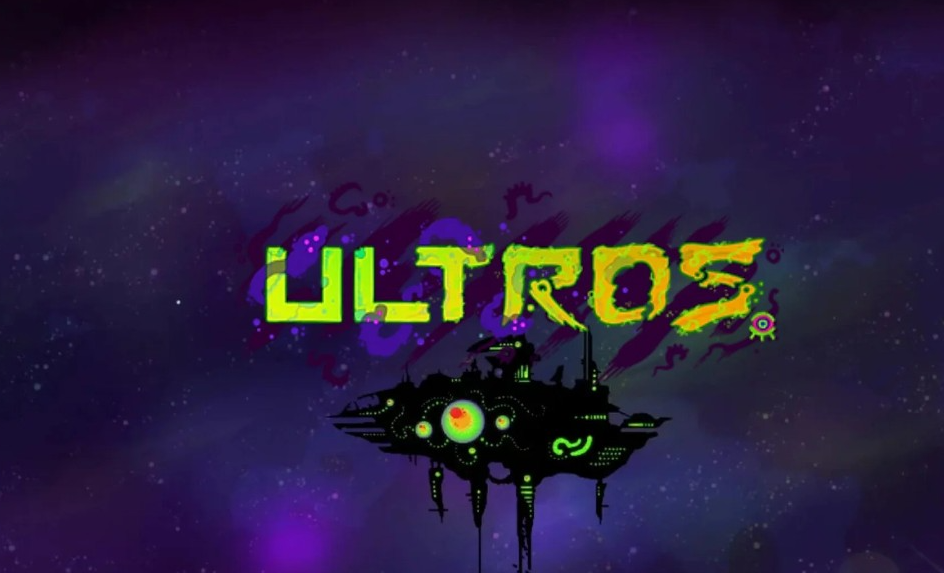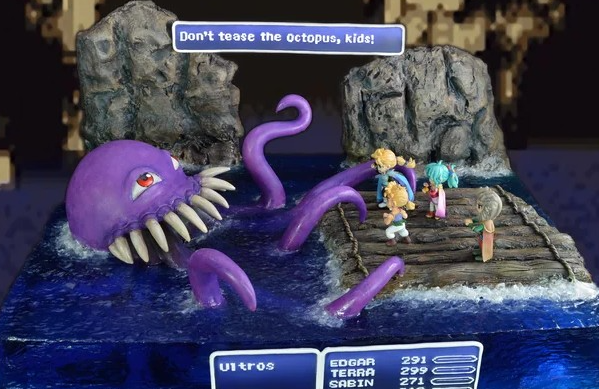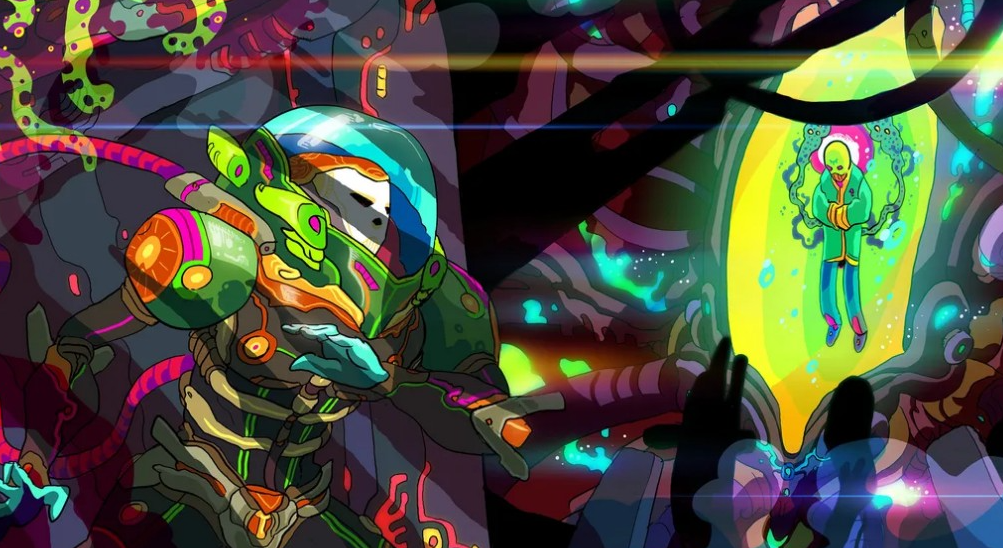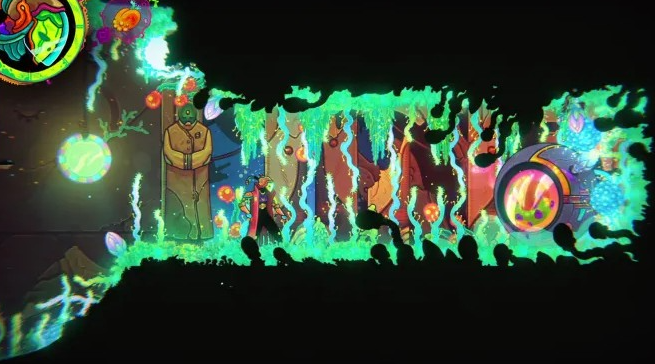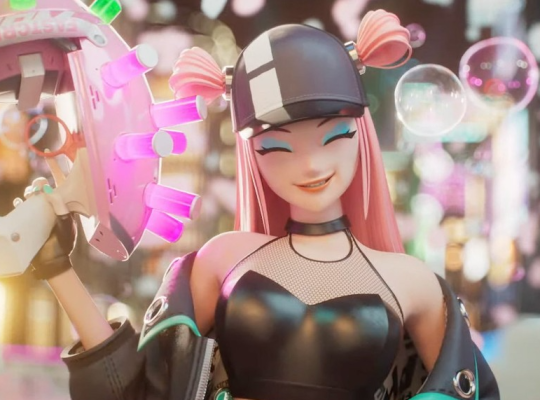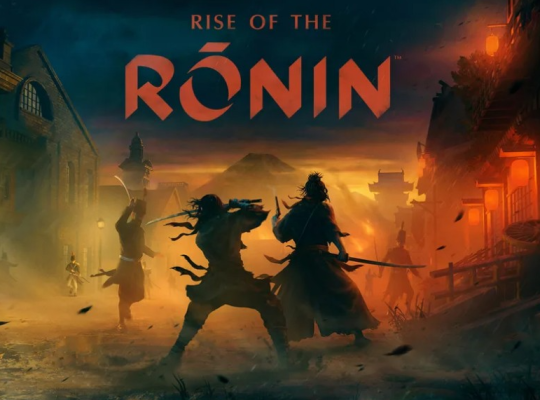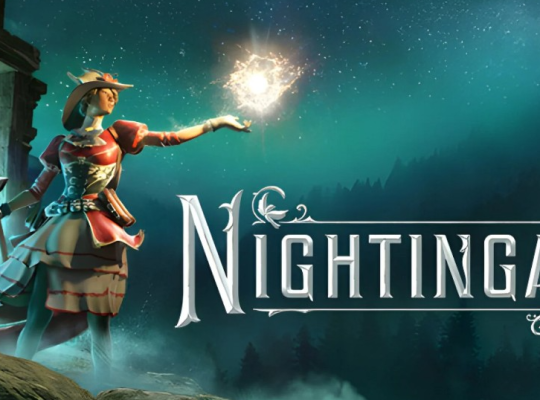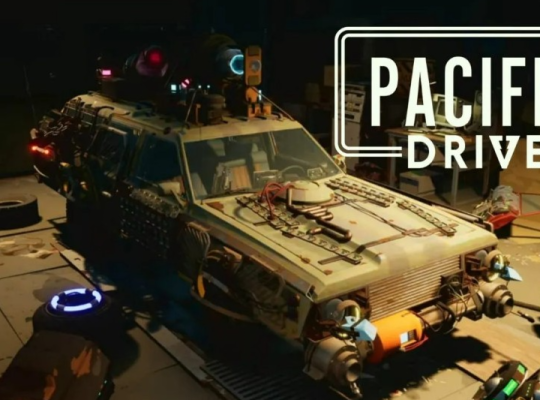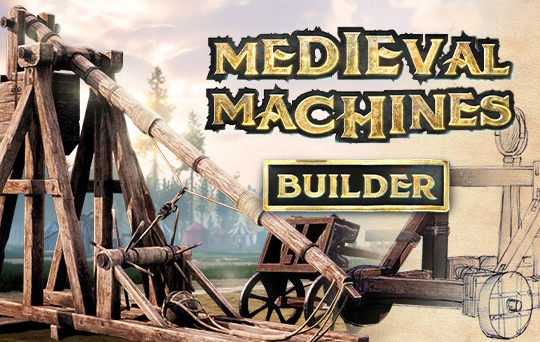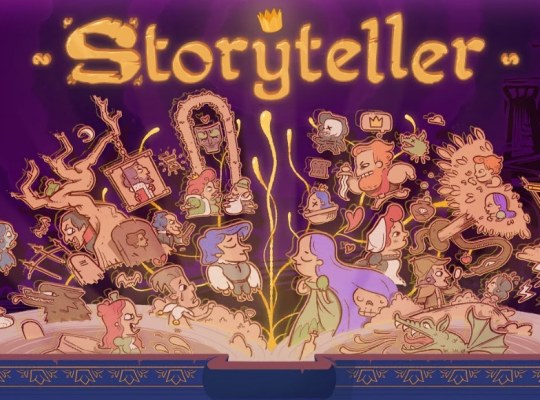Ultros’ Environmental Design: A Pinnacle of Gameplay and Aesthetic Brilliance
Ultros stands out significantly due to its exceptional environmental design, emerging as a critical factor in the ongoing allure of its engaging loop mechanic. In terms of gameplay and presentation, each area within Ultros poses a distinctive challenge, intricately tied to the newly acquired abilities unlocked at the end of the previous loop.
These abilities surpass the typical Metroidvania repertoire, offering unique functionalities such as slicing through obstructive plants or enabling flight across sections of the map. Despite their initial novelty, it’s worth noting that as Ultros unfolds over its 10-hour runtime, these abilities, while remaining unique, may lose some of their luster. Towards the conclusion of the game, the last few abilities may feel redundant or even detrimental to pacing, slowing down the platforming experience to a crawl.
The visual spectacle presented in Ultros immediately captures players’ attention and rightfully takes center stage in the game’s marketing efforts. Under the guidance of Art and Creative Director Niklas “El Huervo” Åkerblad and a talented team of artists, Ultros boasts an impressive visual quality. The game features a vibrant and psychedelic art style that permeates the entire experience, complemented by excellent environmental design. Each area is characterized by specific color palettes and detailed scenery, contributing to a distinctive atmosphere throughout the game.
In essence, Ultros’ environmental design is a testament to its gameplay innovation and aesthetic brilliance. The carefully crafted challenges in each area and unique abilities contribute to the game’s engaging loop mechanic. While certain abilities may lose their impact over time, Ultros continues to shine as a visual masterpiece, with its vibrant and psychedelic art style elevating the overall gaming experience.
Ultros: A Symphony of Sensory Excellence
In the realm of presentation, Ultros transcends mere visual brilliance, unfolding as an outstanding masterpiece that harmoniously blends visuals, sound, and animations. Oscar “Ratvader” Rydelius takes the lead in crafting the game’s sound and music design, seamlessly complementing the captivating visuals to impart a unique identity to each area within Ultros. The synchronization of visuals and audio ensures that every moment elicits the intended emotional response, creating an immersive and dynamic gaming experience.
The music in Ultros, a creation of Oscar “Ratvader” Rydelius, proves to be an integral component of the game’s presentation. It adapts seamlessly to the evolving dynamics of each area, fostering a sense of uniqueness throughout the game. In tranquil, platform-focused zones, the music assumes a quiet and contemplative tone, contrasting with the bombastic and intense compositions that accompany chase sequences and boss fights. When confronting eldritch horrors, the music takes a shrill and eerie turn, heightening the suspense and immersion.
The animations in Ultros further contribute to its remarkable presentation. Opting for a grounded approach, the player-character animations draw inspiration from the original Prince of Persia game. The main character exhibits deliberate yet fluid animations for actions like jumping, climbing, and sliding. While the combat animations deviate slightly from the grounded nature, adapting well to the game’s faster pace, they seamlessly integrate with the overall aesthetic.
Ultros stands as a testament to the synergy of sensory elements in gaming presentation. Beyond its captivating visuals, the orchestrated interplay of music, sound, and animations elevates Ultros into a realm of sensory excellence, ensuring an unforgettable and immersive gaming experience.
Ultros’ Combat Dilemma: Navigating Awkwardness on the Battlefield
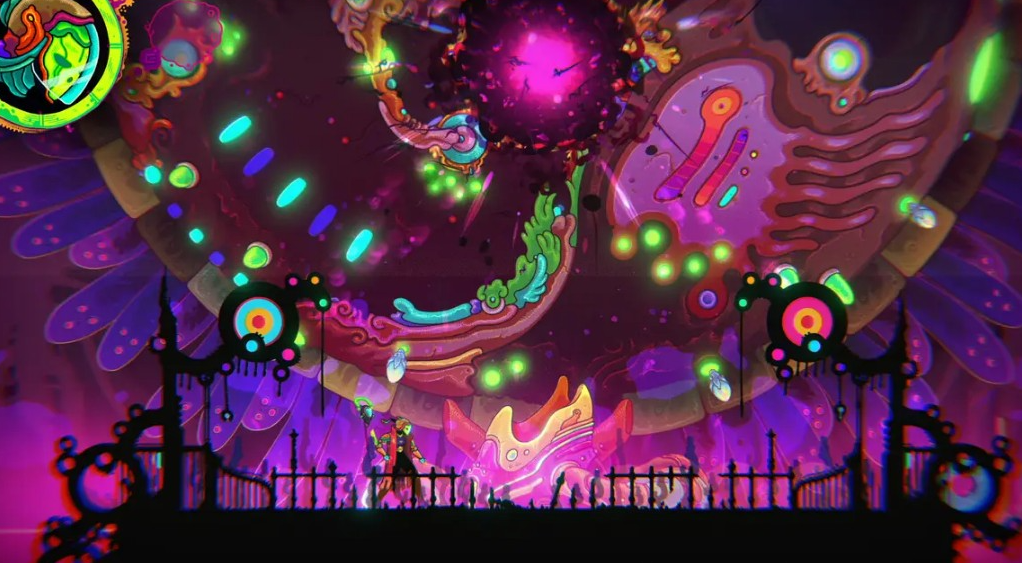
When delving into Ultros, the journey takes an unexpected turn on the battleground, where the game unfortunately falters in maintaining its otherwise sterling reputation. The initiation into Ultros’ combat leaves much to be desired, starting players off with a basic sword and a two-string melee combo. Although the initial adversaries are passive, this introduction fails to showcase the full potential of Ultros’ combat system, leaving players feeling restricted and yearning for a more engaging experience. To compound matters, the combat tutorial is delayed, only emerging an hour or two into the game. This timing leaves players to decipher the game’s combat mechanics through trial and error, an experience that may not be optimal, especially for those new to the genre.
As players progress through Ultros and unlock impressive abilities, the combat dynamics often struggle with unresponsiveness. Despite acquiring formidable skills, the game’s combat can feel lacking in fluidity. A significant hurdle arises when facing enemies and bosses that demand precise timing for dodges, creating an opportunity for a counterattack. Unfortunately, the dodge mechanic itself lacks the desired responsiveness, frequently distancing the player character too far from the enemy, making retaliation challenging within the given window.
This issue becomes even more pronounced during encounters where players need to execute well-timed jumps over enemies. While Ultros’ jumping controls prove effective in platforming segments, they introduce a layer of frustration during heated battles. When Ultros’ combat hits the mark, it exudes a gritty, stylish, and powerful vibe. However, these moments are overshadowed by instances where the combat experience feels awkward and clunky, contributing to an overall inconsistency in the gameplay.
Despite its combat challenges, Ultros stands out as a surprisingly great 2024 Metroidvania, marking an impressive debut for developer Hadoque. The game’s visual allure and engaging narrative compensate for the reservations about certain gameplay decisions. While the combat may leave something to be desired, Ultros, with its stunning aesthetics, promises to captivate players throughout its runtime. It stands as a testament to the potential within the Metroidvania genre, overcoming occasional missteps in the intricate dance of swordplay and enemy encounters.
Ultros: A Friendlier Face in a Vibrant World
Embarking on the journey through Ultros involves defeating foes and navigating relatively simple puzzles. Despite its uncomplicated combat system, there’s a sense of dissatisfaction and clunkiness in the execution. The core concept revolves around attacking enemies and executing a dodgeball through their attacks, culminating in a counter-attack. However, the challenge lies in timing the dodge roll accurately; too early or too late results in taking damage. Fortunately, Ultros maintains a forgiving stance, with minimal consequences for failure, ensuring players can quickly recover from setbacks.
The puzzles in Ultros tend to lean towards simplicity, with the primary challenge often lying in determining the next destination rather than the intricacies of puzzle-solving. Navigating through the game involves looking for clues about where to go next, or consulting the map for guidance. While a few sections offer a level of difficulty, particularly related to planting, most challenges present themselves in a fairly straightforward manner.
On a positive note, Ultros excels in the graphics department. Even during its less impressive moments, the vibrant world remains irresistibly captivating. Each area, enemy, item, and location leave a distinct and lasting impression. The meticulous craftsmanship evident in the graphics serves to elevate the overall gaming experience, compensating for any shortcomings in gameplay mechanics. Ultros, with its friendly demeanor and visually arresting design, manages to create a world that players can’t help but appreciate, making the journey through its challenges a visually enchanting experience.
Ultros: A Visual Marvel with Gameplay Quirks
In the realm of Metroidvania, Ultros emerges as a visual spectacle deserving of genuine recognition. Its visual identity paints an otherworldly canvas, adorned with alien colors and design concepts that linger in one’s memory. However, this remarkable visual success doesn’t seamlessly extend to its platforming and combat elements.
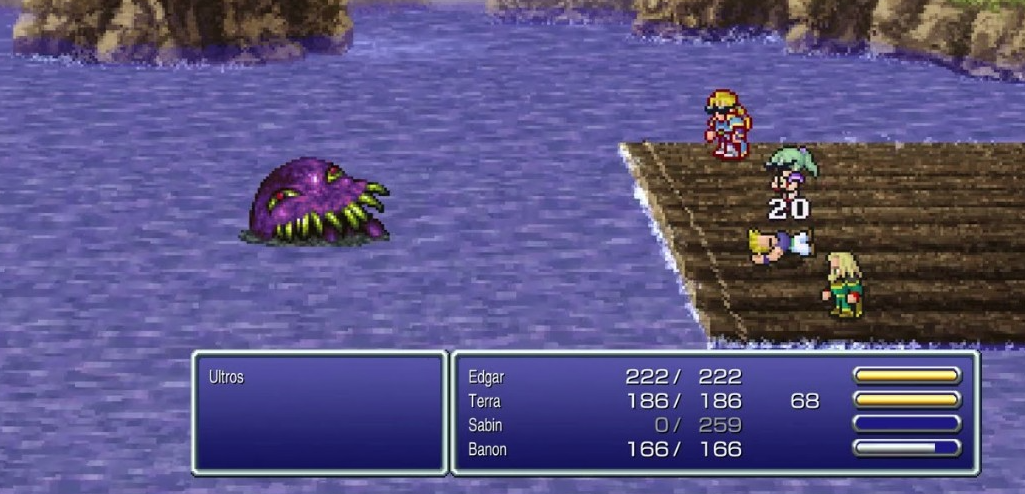
While Ultros might not achieve the same vigorous triumph in gameplay, its unique aesthetic and concise 10-hour runtime, extendable for enthusiasts, make it a standout choice for those seeking a visually distinctive Metroidvania experience. The game bursts with creative ideas, offering players a journey through a world brimming with uniqueness and style.
As Ultros approaches its climax, it takes a departure from the conventional thumb-punishing final boss trope. Instead, it opts for a subtler conclusion, where the payoff is not rooted in the triumph of battle but in the flourishing of a fully realized garden. The sense of satisfaction remains, and as the ship illuminates like a bioluminescent Christmas tree, a tranquil sense of peace washes over. Take a moment to bask in the radiant glow, appreciating the visual grandeur that Ultros delivers.
In the end, Ultros stands as a testament to the power of visual storytelling and unique aesthetics in the gaming world. While its gameplay may have its quirks, the sheer style and imaginative design choices make it a standout option for those who prioritize a visually striking and memorable gaming experience.
Read More – Skull & Bones Reviews – Tactical Action Survival Game.







